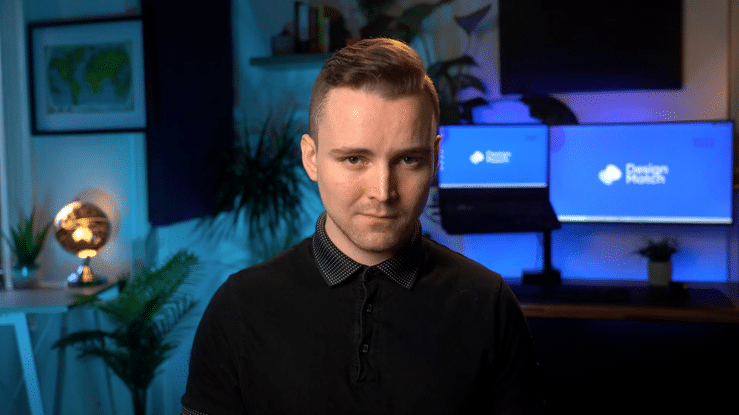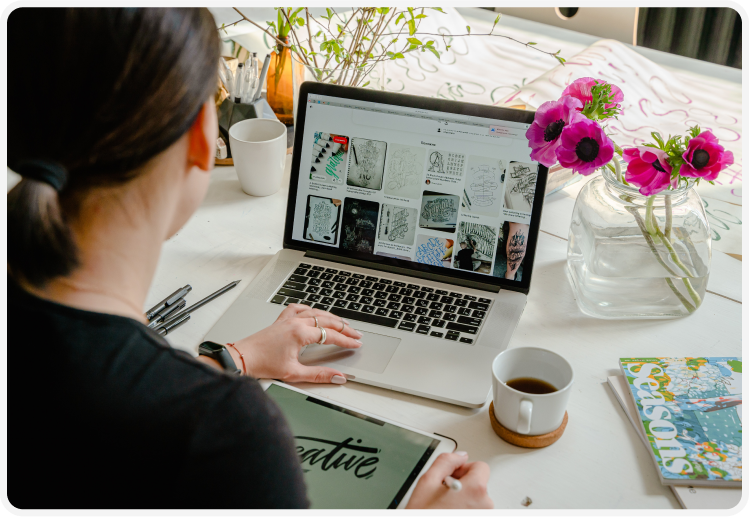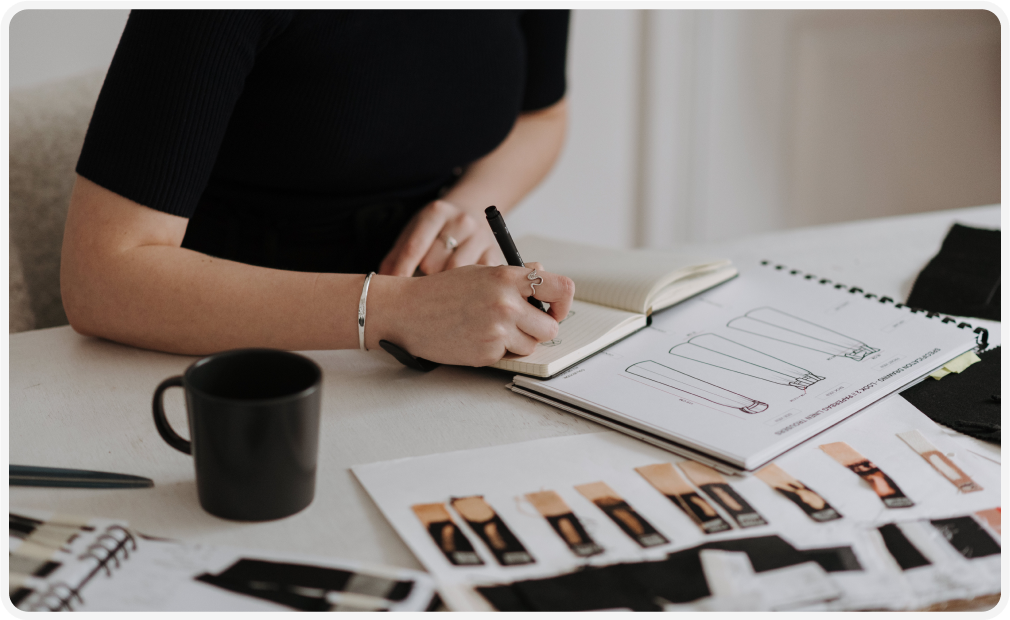Hiring Designer is for your E-Commerce Store.

Increase conversions by 200%
According to a study by the Econsultancy, a user-centered design that focuses on the needs and pain points of the target audience can improve the user experience and increase the likelihood of users completing a purchase, leading to an increase in conversion rates.
Design helps create relatable brands
How can hiring a designer
help my online store?
Create a unique brand identity
Create a visually appealing and unique brand identity that helps the ecommerce company stand out in the market. A strong brand identity can be a major differentiator for ecommerce companies, as it helps to establish trust and credibility with consumers. A designer can help create a consistent and visually appealing brand identity by designing a logo, color palette, typography, imagery, and other visual elements that represent the company's values and mission.
Optimize layout
Optimizing the layout, navigation, and calls to action (CTA) of an ecommerce website can greatly impact the user's experience and ultimately increase conversions. A designer can use various design principles such as white space, contrast, and hierarchy to guide the user's eye through the website and make it easy to find important information and complete a purchase.
Conducting User Research
User research is essential to creating a user-centred design for an eCommerce company. A designer can use various methods such as surveys, interviews, user testing, and data analysis to understand the target audience's needs, pain points, and behavior patterns.

Creating a DTC brands
A designer can help create a DTC (Direct-to-Consumer) brand by conducting research to understand the target audience, creating a unique and visually appealing brand identity, developing a consistent visual language across all touchpoints, enhancing the user experience, creating a clear information hierarchy and experimenting with emerging technologies and design trends.
Brand Creation and DTC
Having a strong brand as a DTC (Direct-to-Consumer) company can have a significant impact on the success of your business. A strong brand can help establish trust and credibility with your target audience, which is crucial in building customer loyalty and driving conversions. With a powerful brand, you can differentiate yourself from your competitors and create a strong emotional connection with your customers. This can lead to increased brand awareness and an increase in customer lifetime value.
Should I hire a UX or UI Designer?
When it comes to hiring a designer for a startup, it can be challenging to decide whether to hire a UX or UI designer. Both roles are important and can bring different value to the company, but ultimately it depends on the specific needs and goals of the startup. If the startup is focused on creating a product or service that is easy to use, efficient and meets the needs of the user, then it would be beneficial to hire a UX designer. A UX designer will conduct user research, create wireframes, and design the overall structure and flow of the product or service to ensure that it is user-centered. On the other hand, if the startup is focused on creating a visually appealing, attractive and easy-to-use product or service, then it would be beneficial to hire a UI designer. A UI designer will design the layout, color, typography and other visual elements of the product or service to make it visually appealing and easy to use.
Ultimately, it's important to have a clear understanding of the startup's goals and user needs in order to decide whether to hire a UX or UI designer.
Why hiring a freelance designer is smarter
Hiring a freelance designer for your e-commerce website can be a smarter choice for several reasons. Firstly, it can be more cost-effective than hiring a full-time designer, as you only pay for the specific project or time period that you need. This can save your e-commerce startup a significant amount of money in salary costs and other benefits.
Secondly, a freelance designer can bring a wide range of skills and experiences to your project, as they often work with multiple clients and industries. This can bring new perspectives and ideas to your e-commerce website design, helping you to stand out in a competitive market.
Hiring a freelancer is up to 30% faster than a traditional employee. Also, by hiring a full-time freelancer on design match you save up to 20% on hourly rates. Start the matching process today, it's risk-free.
I should hire a designer if...
You want to create a visually appealing and unique brand identity that helps your business stand out in the market.
You want to optimize the layout, navigation, and calls to action (CTA) of your ecommerce website to guide users through the conversion process and increase conversions.
You want to create personalized landing pages that cater to different user segments and their specific needs.
You want to design effective dashboards and user interfaces that are user-centered, visually appealing, and easy to use.
Business value
of UI Design
200% increase
A study by the Nielsen Norman Group found that a well-designed user interface can increase conversion rates by up to 200%. This means that a business with a poorly designed UI could be missing out on up to twice as many customers.
80% recognition
Research has shown that color can have a significant impact on brand recognition, with the use of consistent and appropriate colors in design resulting in an increase in brand recognition by up to 80%.
23% more engagement
Research by the University of California found that businesses with well-designed mobile apps see a 23% increase in customer engagement and a 17% increase in customer satisfaction.
Why hire your next product designer with Design Match
Risk Management
We take care of international compliance, vetting, legal and financial components of hiring a designer. We provide a foundation for sustainable growth.
Flexibility
Our weekly billing model allows your designs to work along side the growth of your startup. There are no longterm contracts at Design Match.
Support
Design Match is run by designers who not only help you find the perfect match, but can provide suggestions, tools and support along the way.
Common questions
from founder
A good designer for ecommerce should have experience in designing for digital platforms, specifically ecommerce websites and product listings. They should also have a strong understanding of user experience (UX) and user interface (UI) design principles, as well as knowledge of ecommerce best practices. Additionally, they should have a portfolio of relevant work that demonstrates their skills and experience.
It's important to have a clear understanding of your design needs and goals for your ecommerce business. Look for a designer who has experience and expertise in the specific areas you need help with, such as branding, product listing design, or website design. You should also consider if their design aesthetic aligns with your brand and if they have experience working with similar types of products or businesses.
Yes, a good designer should be able to help you with branding and product listing design. Branding is an important aspect of ecommerce, and a designer can help you create a visual identity for your business that will make it easily recognizable to consumers. Product listing design is also crucial for ecommerce, as it can greatly impact consumer engagement and sales. A designer can help you create visually appealing and informative product listings that will help drive conversions.
The cost of hiring a designer for ecommerce can vary depending on their experience, location, and the scope of the project. A typical hourly rate for a designer ranges from $50 to $150/hour, but it can be more or less. It's always important to get a clear and detailed quote from the designer before starting the project.
The design process for ecommerce typically involves several stages, including research, planning, design, and testing. During the research phase, the designer will gather information about your business, your target audience, and your competitors. In the planning phase, they will create a design brief and develop a concept for your ecommerce website or product listings. During the design phase, the designer will create visual assets and layouts for your ecommerce business. Finally, in the testing phase, the designer will test the design to ensure that it's user-friendly, visually appealing, and meets the goals of your business.
Find your next designer today with Design Match
Speak with a matcher
Tell us what you're working on and see if Design Match is a good fit




